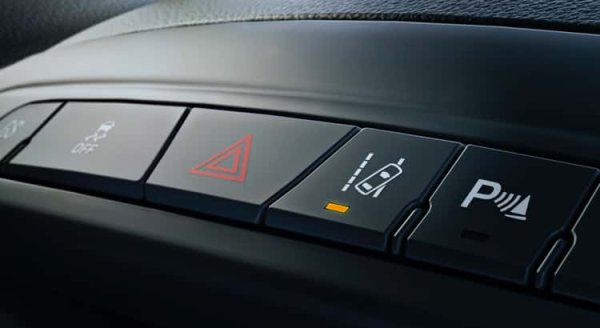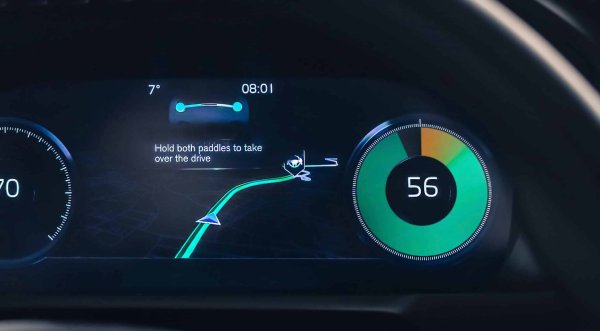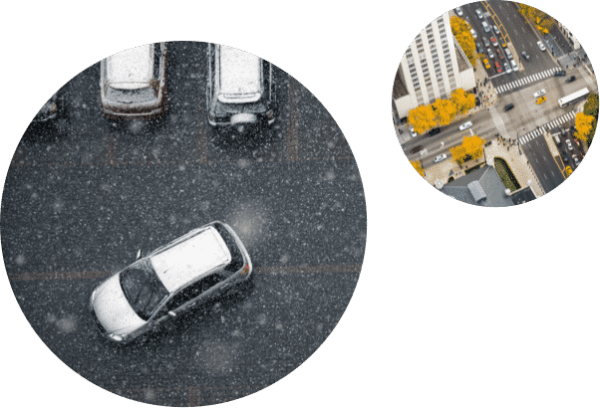Through the Society of Automotive Engineers (SAE) International, automotive experts from around the world developed a classification system for defining driving automation for motor vehicles. This system has been adopted by the U.S. Department of Transportation and the United Nations. SAE defines six levels of driving automation beginning at Level 0 and concluding at Level 5.
LEVELS OF AUTOMATION
SAE Levels 0–2
In Levels 0 through 2, the driver performs part or all of the dynamic driving task, which includes steering, braking, accelerating, monitoring the vehicle and roadway, as well as determining when to change lanes, turn or use signals.
Level 0
Level 0 means no driving automation, and the driver performs all the dynamic driving tasks, even if assisted by safety systems like blind spot warning or lane departure warning.
Level 1
Level 1 defines the addition of certain driver assistance systems involving either sustained steering or sustained acceleration/deceleration using information about the driving environment with the expectation that the driver performs the remainder of the dynamic driving task.

Examples of Level 1 systems include lane centering with active steering assist and adaptive cruise control.
Level 2
Level 2 builds to partial driving automation where the driver is responsible for supervising the driving automation system whenever it is engaged and is always ready to take control of the vehicle if needed, with or without warning. These systems involve both steering and acceleration/deceleration simultaneously.
One example of Level 2 systems is traffic jam assist that combines adaptive cruise control and lane centering technology under the limited condition of driving in a traffic jam on a freeway. The driver is required to monitor the driving environment while the system is engaged and be prepared to take control at any time.
SAE Levels 3-5
In Levels 3 through 5, the Automated Driving System (ADS) performs the entire dynamic driving task while it is engaged.
Level 3
Level 3 is conditional driving automation, where the Automated Driving System (ADS) handles all driving functions within a limited domain of operability (e.g. certain road types, speeds, weather conditions, or within a prescribed geographic area) with the expectation that the human driver will respond appropriately to a request to intervene. The automation occurs only when certain conditions are met.

For example, if a vehicle has a Level 3 ADS feature designed to operate the vehicle at low speeds in dense traffic on limited-access, divided highways, when traffic clears or when the limited-access highway is about to end, the ADS feature will alert the driver in time for the driver to resume driving. As another example, if a snowstorm occurs, the system may alert the driver to resume driving.
Level 4
Level 4 is high automation, where the Automated Driving System (ADS) handles all driving functions within a limited domain of operability and the driver is not allowed to intervene. For this level, the operation of the ADS is only allowed in a specified environment. The ADS safely maneuvers the vehicle to a “minimal risk condition” in the event of a malfunction or if the vehicle is about to leave its domain of operation.
For example, if a Level 4 ADS-dedicated AV designed to operate within a military base or geo-fenced city center experiences a malfunction that prevents the AV from being able to perform the dynamic driving task, the system will move the vehicle to a safe location. Similarly, if the same AV were to encounter a condition outside of its domain of operability, like a snowstorm or darkness, and not be able to perform the dynamic driving task, the system will move the vehicle to a safe location.

Level 5
Level 5 is full automation, where the full-time performance of the Automated Driving System (ADS) handles all aspects of the dynamic driving task (steering, braking, accelerating, monitoring the vehicle and roadway, as well as determining when to change lanes, turn or use signals) that can be managed by a human driver of a Level 0 vehicle.